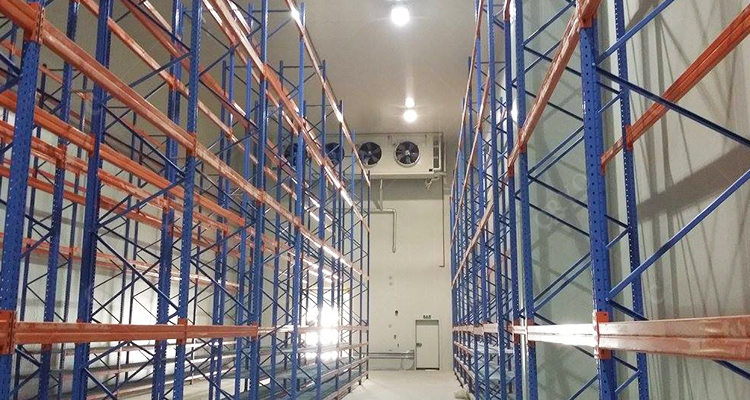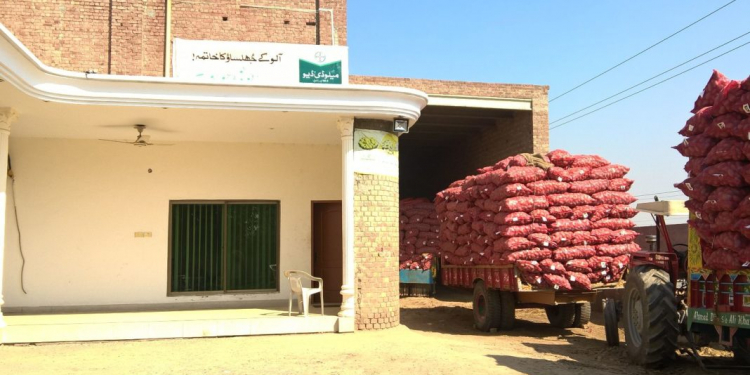There is an opportunity for organized cold storage or ‘palettized’ cold storage in tier-I cities like Mumbai, Delhi-NCR, Bengaluru, Chennai, Pune, Kolkata, Hyderabad as well as tier-II cities like Lucknow, Kanpur, Ranchi, Patna, among others.
India’s cold chain sector is expected to grow at over 20 percent CAGR by 2025 due to its transformation from conventional frost storage to modern storage space.
The estimates are based on the sector’s performance over the past few months, where despite the post-Covid economic impediments, the organized cold chain segment has seen significant growth in country-wide footprint, said a JLL statement. As per JLL, there is an opportunity for organized cold storage or ‘palettized’ frost storage in tier-I cities like Mumbai, Delhi-NCR, Bengaluru, Chennai, Pune, Kolkata, Hyderabad as well as tier-II cities like Lucknow, Kanpur, Ranchi, Patna, among others.
An additional 1.5 lakh to 2 lakh pallet capacity (frozen and chilled) may be added as part of temperature-controlled storage space in the next two to three years, it said. Cold chain refers to the transportation and warehousing of temperature-sensitive products from the point of origin to the point of consumption, which increases shelf life and prevents spoilage.
About 60 percent of frost storage capacity is concentrated in the states of West Bengal, Uttar Pradesh, and Bihar, out of which storage of potatoes accounts for 85-90 percent of the capacity. Frost storage in India contributes 43.7 percent of the total revenue from the cold chain industry and only 36 percent have a capacity below 1,000 MT.
“Automation in the logistics sector will only become more pronounced in the coming years and we see innovation in the multimodal and cold supply chain as catalysts for new segments of demand,” said Yogesh Shevade, Head – Industrial Services, JLL, India.
He said that both from the equity and lending community, the appetite for the yield in the industrial sector is likely to further drive the investor demand for cold chain facilities. “The rationale behind the expansion is primarily driven by capturing higher market share by organized frost chain operators, changing consumer behavior for quality products, and securing supply reliability in a pandemic like situation,” he added.
While production of perishables has increased consistently in the past five years, cold chain sector potential remains untapped due to the high share of single commodity storage and soaring investment for land and refrigerator units, said the JLL statement. Additionally, the lack of necessary enabling infrastructure, inadequate awareness for handling perishable goods, and lapses in service by storage and transportation providers leading to inferior quality goods, have impacted demand.
In current times, for transporting and storing temperature-sensitive products refrigerated storage has become an integral part of the supply chain, it said. Proximity to population centers, population growth, changing consumer preferences, and consumer spending are the primary drivers for frost chains.
It noted that organized retail and foodservice industries have emerged as new cold chain segments, majorly due to changing consumption patterns. Increasingly, consumers demand a large variety of fresh fruits and vegetables, dairy products, meat, and poultry products, and other temperature-sensitive commodities have led to rising in frost chain infrastructure.

Netscribes India that launched its report on the “Cold Chain Market in India” reveals that the current cold chain market is primarily dominated by the private sector. The government aid that it received in the last two budgets has boosted more players to enter this still maiden industry. Given that the industry is still in its nascent stage, it has a long road to traverse before it finally becomes an organised industry.
Adoption of advanced technology is the need of the hour to ensure a hassle-free, energy efficient cold chain operation. Technological upgradation can make it cost effective in the long run. Attracting foreign direct investment in this sector can also trigger further demand but this is unlikely to happen in the near future.






